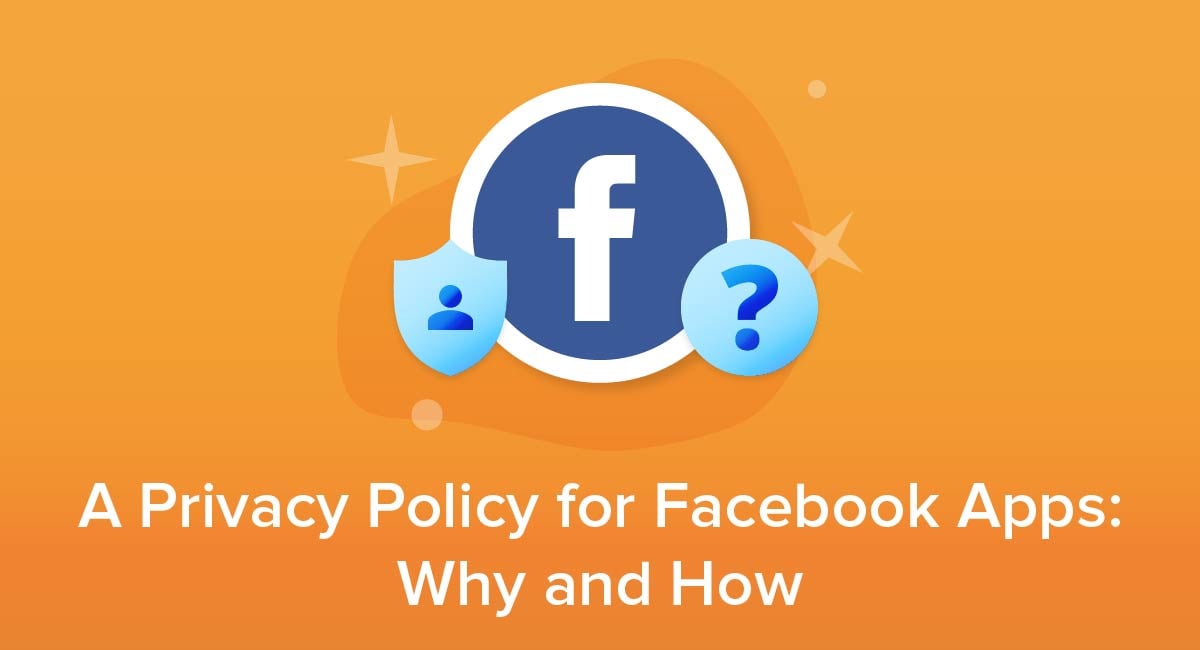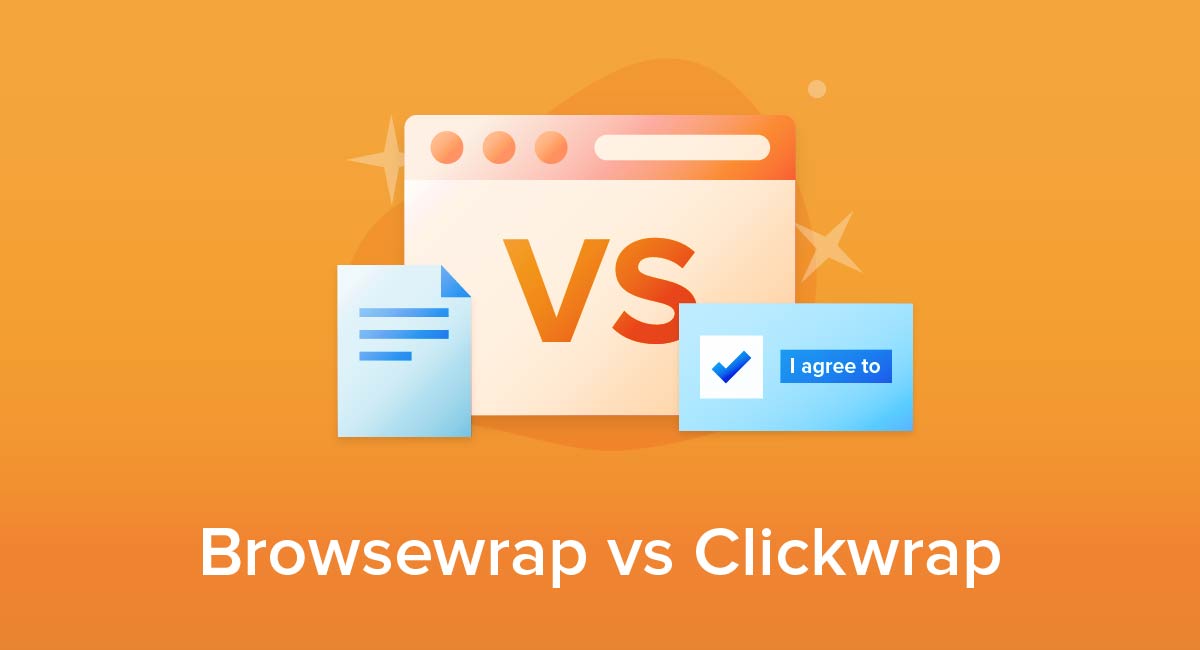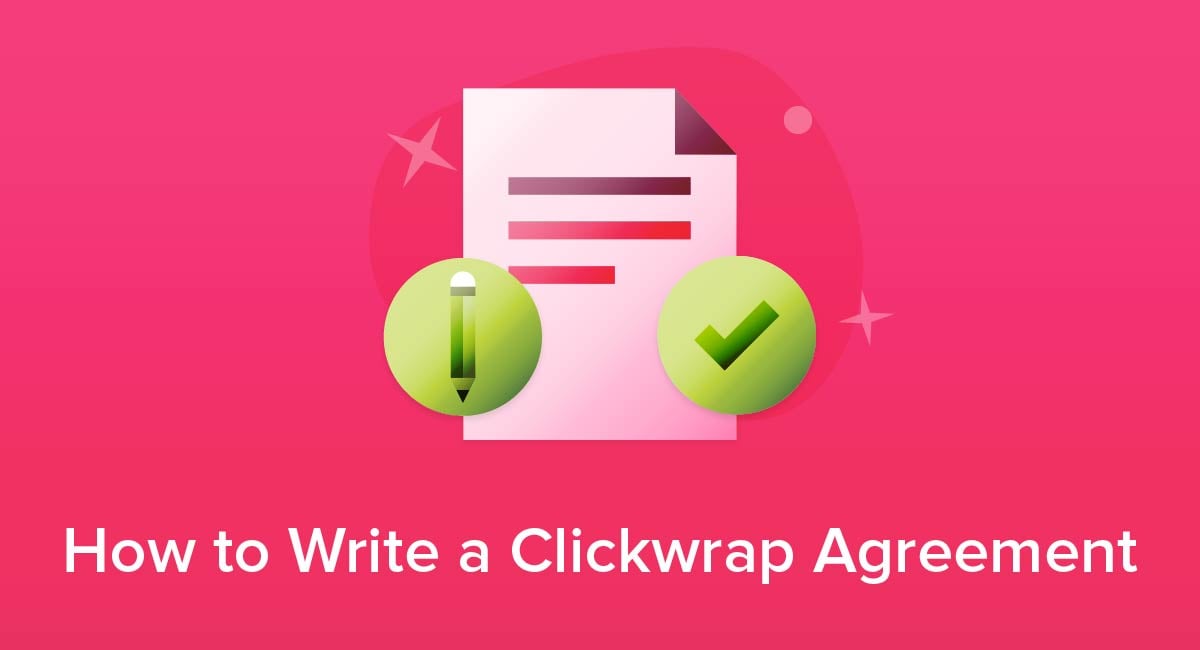
Writing a clickwrap agreement is simple. You need to pay attention to two main things:
- The terms of your agreement, and
- The attainment of consent
In short, you need to write a comprehensive legal policy and you have to ensure that your client fully understands it and agrees to it.
What is Clickwrap?

A clickwrap agreement is a type of digital contract in which the user is given the choice to agree to the legal agreement before using a service. The agreement could be a Privacy Policy, Terms and Conditions, an End User License Agreement (EULA) or other type.
It often appears as an "I understand," "I Agree," "OK," or "Accept and continue" checkbox under a link to the policy that the user must toggle to continue using the program. Not doing so will end in termination of said program or the inability for a user to move forward with registering, installing, etc.
The clickwrap on Facebook's sign up page does not explicitly use one of the mentioned phrases as consent, but rather simply clicking on "Sign up" means the user agrees to its terms:
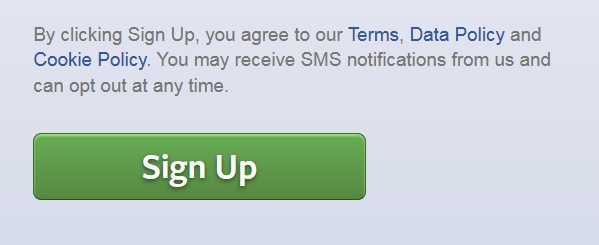
While clickwrap is used for a variety of products, it is most commonly found during signing up for a service, creating an account, ordering an item online or continuing with a software installation.
Its name is derived from "shrink wrap contracts" in which an agreement was provided within a package. The user was understood to have assented to the conditions once he or she opened the package.
What is Browsewrap?

Browsewrap is another type of digital contract where merely using a service is considered as agreement to its legal terms.
Companies using browsewrap often include a link to its policy somewhere in the footer of a website.
Spotify's Privacy Policy can be found at the bottom of its website, linked in the footer:

In an app, the terms are usually found in the Settings or About menu.
Duolingo, a language learning app, presents its Terms and Privacy Policy at the end of its settings page:
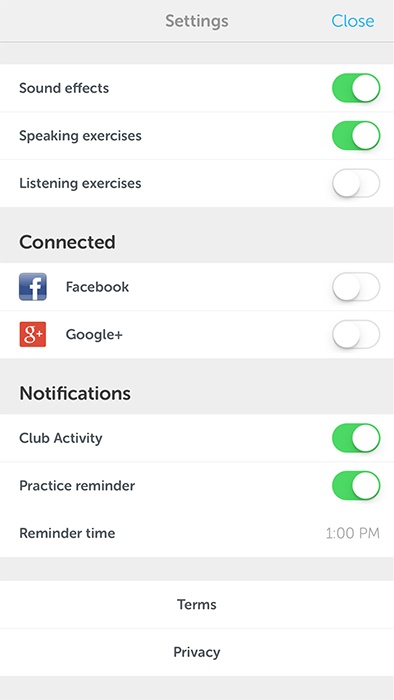
When browsewrap is used, you'll see a policy statement usually starting out like this one from Spotify:
"Thanks for choosing Spotify ("Spotify", "we", "us", "our"). By using the Spotify service, websites, or software applications (together, the "Spotify Service" or "Service"), including by purchasing or receiving Codes or Limited Offers, you are entering into a binding contract with our local company in your country of residence (your "Local Country") if applicable or the company listed in this chart. Your agreement with us includes these Terms and Conditions of Use ("Terms") and our Privacy Policy (together with the Mobile Terms where applicable, the "Agreements").
If you don't agree with these Terms, then please don't use the Service."
A sentence stating that use of the service constitutes an agreement to the legal policy, as seen here, is a key component of browsewrap.
Here's the Terms and Conditions of Duolingo. Note that it starts with a similar statement:
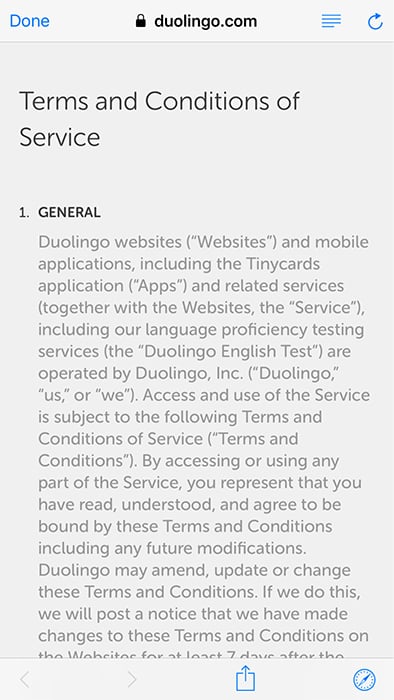
Why is Clickwrap Better?

Browsewrap lacks a certain component that is essential in clickwrap: Notice.
Clickwrap draws increased attention to the acceptance of the legal terms, resulting in a better chance that the user has read and consented to the agreement.
This increased notice comes in handy in the enforceability of a contract.
Every Terms and Condition or Privacy Policy a company puts out has to be enforced by the company itself. All contracts involve two parties: the promisor and promisee. The company that is setting the contract is the promisor. It is giving you a "promise" of providing services if its requests are met.
The user is the promisee. It is the one who will receive what is being promised.
It is the promisor's responsibility to ensure that the contract he is setting can be enforced. This is crucial because if its company ever enters a legal dispute, the enforceability of the terms will come under scrutiny.
The enforceability of an agreement comes down to three key factors:
- Notice (whether the user was notified of the terms)
- Consent (whether the user agreed to the terms)
- Fairness (whether the agreement is just)
If a company is using clickwrap, things are easy. As long as the policy is fair, once the user has clicked the checkbox, the contract has been set and enforced.
However, with browsewrap, notice and consent become harder to establish. People who have used a certain service can claim to have not been made aware of or given consent to the legal terms, leading to potential lawsuits.
To ensure mishaps like this do not happen, companies must pay close attention to how their website is designed. Particular thought must be given to the visibility of the hyperlink that carries the legal terms.
Font size, color, location relative to other links all play a role in deciding whether a customer was notified of the existence of a legal policy. Consider the following legal case and how it was decided:
Long v. Provide Commerce, Inc. (2016)
The plaintiff sued the flower company claiming they were involved in consumer fraud. They argued that since the company's Terms and Conditions were hard to find on the website, they never had a chance to read them and give their consent, even though they made purchases through the site.
The court ruled in favor of the plaintiff. It said that the design of the website and its hyperlinks gave sufficient reason to decide that the terms were, indeed, hard to access.
Places Where Clickwrap is Used
Clickwrap is commonly found in software installations. Free or paid programs each have different contracts such as the GNU General Public License (GPL) and EULA.
Here's an example of an EULA from Blender that uses clickwrap:
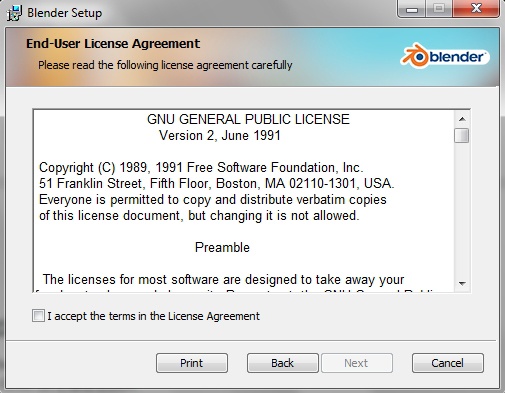
The clickwrap on Armor Games' website is a good example of using clickwrap to incorporate an age check along with a Terms and Conditions agreement.

Clickwrap is often used on mobile app platforms to let people know of the permissions an app requires.
The Android game Hearthstone needs to access some components of a player's phone. Once you click on "Install" you are authorizing the app to access the information it has requested:
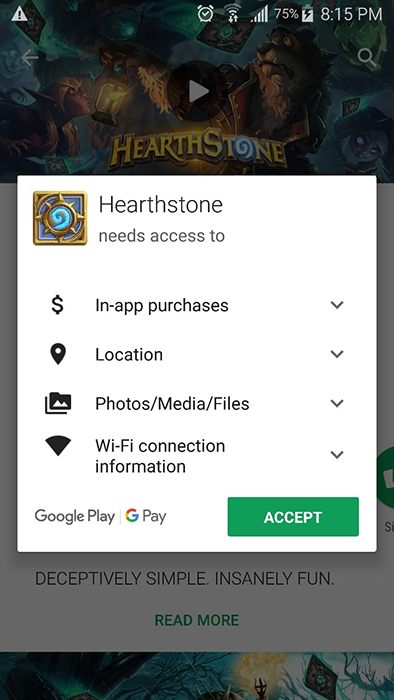
In EU member countries, due to the EU Cookies Directive, companies are required by law to obtain the consent of its users when using cookies.
Therefore, many websites display a Cookie Policy banner that lets the visitors know that using the website means that they agree with this policy. The banner also contains a "close and accept" button and a link to the complete cookie policy itself.
Many WordPress pages show a cookie policy banner like this one.
![]()
Apart from these, there are other uses of clickwrap as well. It is often used to notify people of policy changes and get their consent on new terms.
Marketing promotions on company websites are accompanied with clickwrap agreements that collect data such as email addresses that can later be used in mailing lists.
Components of Good Clickwrap

When you are writing a clickwrap agreement, there are some components that you have to include. You have to ensure that you get these things right as small mistakes can turn into costly lawsuits.
Affirmative Active Action
A clickwrap agreement must provide users with the option to give affirmative and active consent. It should be something as direct as saying "I agree." The user must not be allowed to continue without having done so.
Legally, this ensures that the contract is binding, regardless of whether you have read the actual terms or not.
I.Lan Systems v. Netscout Service Level (2002)
In this case, the plaintiff claimed that according to a VAR (Value Added Reseller) agreement that it signed with the defendant, it had the right to sell Netscout's software along with perpetual upgrades.
However, the defendant argued that the conditions were made clear in the clickwrap agreement the plaintiff signed before installing its software.
After looking over three different agreements that were signed: the VAR contract, purchase order and the clickwrap agreement, the judges ruled in favor of the defendant.
The ruling stated that since the first two agreements do not deal with the specific matter fully, the clickwrap license must be followed which clearly mentions that resellers could only rent out its software.
Affirmative action is an essential part of clickwrap.
However, pre-ticked boxes in which someone has to untick to remove consent is bad practice. It reduces the enforceability of your contract as any checkbox that has been ticked already cannot count as effective consent.
In 2011, the EU banned its member countries from using them.
On the 20th of June, 2018, the Consumers Association of Singapore (CASe) warned customers against online retailers that used pre-ticked boxes, calling the act "unethical."
Terms Should be Linked or Displayed Clearly
The terms of your contract must be displayed clearly. A good idea would be to show a dialog box with white background, containing the statements written in at least a 12 px font that is legible and preferably black in color.
If you are using hyperlinks in your clickwrap, the word that carries the link must be distinguished from the rest with an underline or a different color.
Try to keep the license as simple and clear as possible. Failure to do so may cause your customers to misunderstand statements and sue for ambiguous terms.
Adobe's Terms of Use are presented in a very easy-to-read manner. The font choice, bold and capitalized significant words and color selection make this an ideal example of a Terms of Use.
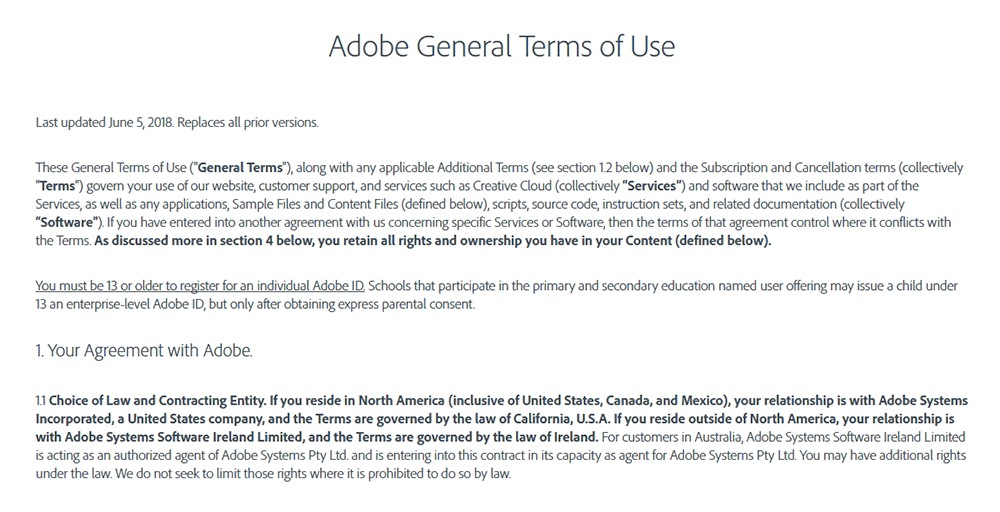
Most importantly, the words "Terms and Conditions" or EULA or any other license heading must be written in a large font to strengthen enforceability. Such keywords are often capitalized.
This ensures that anyone who has clicked "I agree" knows the importance of what they have agreed to.
Terms Should be Fair
The final component of good clickwrap is having a good Terms of Conditions. Writing proper legal terms is not just related to clickwrap but is a required skill for any online business.
Your agreement must be fair. There should be no attempts to take away too much from the user for little in return.
Standard form contracts or contract adhesion is a take-it-or-leave-it contract that gives users little freedom while using a service.
While they are not always unenforceable, they do often run into legal problems as courts see them as an abuse of power.
While it is expected that most people do not read the terms at all, it is not a good idea to try and get away with binding them into unfair agreements.
Ellis v. McKinnon Broadcasting Co. (1993)
John Ellis was an employee at the McKinnon Broadcasting Company where he unknowingly signed a contract that stated that he were to not get his commissions if he left the job before the company got the payment.
The plaintiff claimed that this was ambiguous in the contract. The court ruled against him in that regard.
However, it did say that the provision at hand was unethical and hence, passed the ruling in the plaintiff's favor.
Additionally, the consent that is asked of the user via the "I agree" checkbox must pertain specifically to the assent of the Terms and Conditions only.
For instance, if you wish to obtain permission to use your customer's log reports, you must specifically state it separately. Bundling it with your Terms of Service may reduce the enforceability of your clickwrap as you may be seen as invading a customer's privacy.
Apart from the usual license agreement, Microsoft's SQL Server 2012 asks the user's permission to send error reports to the company:
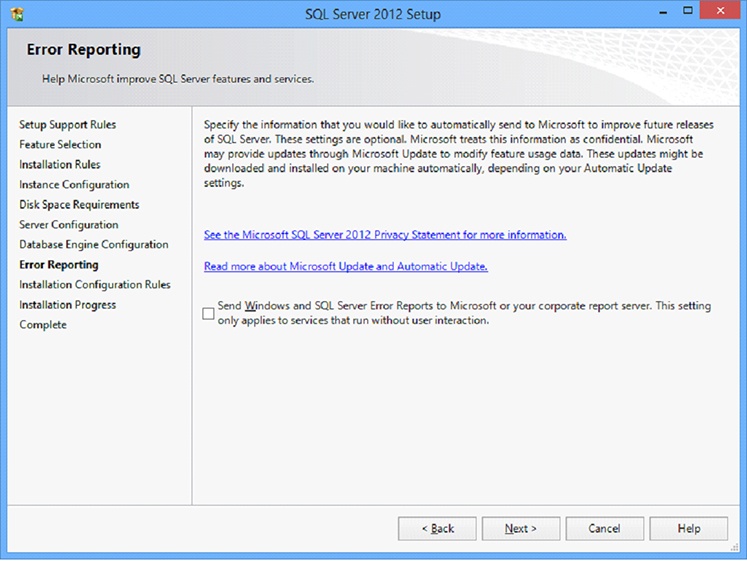
Finally, any links to further legal agreements must be provided. A good practice would be to distinguish links with an underline and a bright blue font.
All necessary links to other terms must be mentioned.
We return to Adobe's Terms of Use. Here we can see that links are in a light blue font that makes them stand out from the rest of the text. There are multiple links as well that refer to all the important pages that are being referred:

Conclusion
Clickwrap is essential to a company from a legal perspective when it comes to getting users to agree to terms or give consent for things like cookies use or communications. Always write a good policy and get effective consent for it by using active clickwrap methods. Make it clear what you're asking users to agree to when they click a button or check a box.
